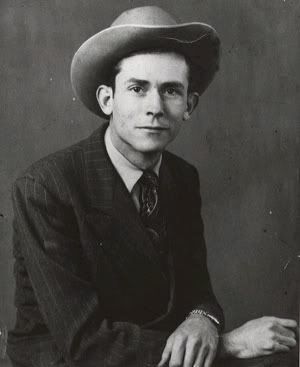"By KATE KELLY
Bear Stearns Cos., the 85-year-old Wall Street firm known for its tough trading culture, was rescued from impending bankruptcy by a deal with J.P. Morgan Chase & Co. on March 16, 2008 -- making Bear the first major casualty of the financial crisis. The firm spiraled from being healthy to practically insolvent in about 72 hours.
The meltdown began in earnest the evening of Thursday, March 13, 2008, when Bear executives made a shocking discovery: They were nearly out of cash. Faced with a slew of withdrawals from worried clients and a sudden pullback from lenders, the firm had less than $3 billion on hand -- not enough to open for business on Friday.
Bear chief executive Alan Schwartz immediately called J.P. Morgan, which as Bear's clearing agent managed its cash, to ask CEO Jamie Dimon for an overnight loan. Mr. Schwartz knew that if a deep-pocketed creditor like J.P. Morgan didn't come through, Bear's only option was bankruptcy, and he later phoned New York Federal Reserve Bank president Tim Geithner to say so.
Mr. Dimon, a veteran dealmaker, was willing to try to help. But, concerned about making a major financial commitment after just a few hours of research, he prevailed on the Federal Reserve Board for the funding instead.
During the wee hours of March 14, Fed officials relied on legislative powers that hadn't been used since the 1930s to find a temporary solution: a loan to Bear of undetermined size, to be provided through J.P. Morgan. What follows is an account of some of the events that surrounded their move.
Thursday, March 13, around 7:45 p.m.
Tim Geithner wasn't surprised to hear that night from Bear. Early Thursday morning, he had received a call from Alan Schwartz, who had warned him that a cash crisis might be looming.
72 Hours
Government officials and bankers raced the clock through the weekend to sell Bear Stearns.
Thursday, March 13, 2008
6:00 p.m.
Chief Executive Alan Schwartz, Chief Financial Officer Sam Molinaro, and other senior Bear executives meet to discuss the firm's cash position. The shocking news: They're down to less than $3 billion, not enough to open for business on Friday.
Friday, March 14
4:45 a.m.
Federal Reserve Chairman Ben Bernanke, Tim Geithner, president of the Federal Reserve Bank of New York at the time, left, then-Treasury Secretary Hank Paulson, and other government officials hold a nail-biting conference call. They discuss Bear's precarious position and what a Bear bankruptcy could mean for the broader markets. Fearing disaster, Fed Board members authorize an emergency loan to the troubled investment bank, to be provided through J.P. Morgan.
7:30 p.m.
En route home from his worst day on the job ever, Mr. Schwartz gets a call from Messrs. Geithner and Paulson, who tell him he must have a deal to sell Bear by Sunday evening. He calls Mr. Molinaro with the news, and they prepare to meet first thing the next morning at the office.
Saturday, March 15
6:00 p.m.
After a long day of due-diligence meetings with executives from J.P. Morgan, who are interested in buying Bear, Mr. Schwartz receives a tentative bid from the large bank: between $8 and $12 per share. He and his team are grim that the price isn't higher, but relieved to have a potential deal in the works.
Sunday, March 16
9:00 a.m.
J.P. Morgan executives meet to discuss the Bear purchase after a sleepless night of reviewing the smaller firm's books. Hearing of his team's grave concerns about the quality of mortgage assets in Bear's portfolio, J.P Morgan Chase & Co. chairman and CEO Jamie Dimon decides to call off the talks.
Mr. Geithner alerts Messrs. Paulson, right, and Bernanke to the latest development. They discuss whether the government can backstop a J.P. Morgan purchase of Bear by agreeing to absorb potential losses.
4:45 p.m.
Bear's investment banker gets a call from J.P. Morgan with the bank's final bid: $2 per share. Despite misgivings among Bear's board members, including chairman Jimmy Cayne, directors reluctantly approve the deal.
7:05 p.m.
The down-to-the-wire purchase is announced to the world. About 10 minutes later, the Fed reveals plans to "open the discount window" and allow investment banks to borrow directly from the government, an unprecedented move designed to aid other struggling firms.
Mr. Geithner had spent much of the day talking to his staff and other regulators about the issues that faced the troubled investment bank, trying to gauge how swiftly it might slide downhill. Unlike some officials at the Securities and Exchange Commission, he had taken cold comfort in knowing that Bear had opened that morning with close to $10 billion. What mattered, he felt, wasn't the hard cash the firm kept on hand, but how long that cash could last under such punitive market conditions. Not long, had been his guess.
The New York Fed president had spoken to Mr. Schwartz earlier in the evening and knew he was contacting J.P. Morgan for a loan. Until he got an update, however, all Mr. Geithner could do was wait. He was eating dinner with his wife and children at their suburban home when Bear's CEO called with terrible news.
"We're down to three or four billion and we feel like we've got no option but to file," Mr. Schwartz said, in a reference to bankruptcy.
Mr. Schwartz had also spoken to Jamie Dimon that evening, interrupting the J.P. Morgan chief's 52nd birthday celebration with his family. "Let's do something," the Bear CEO had told him. It was too short notice for a wholesale purchase of Bear, he knew, but the firm wouldn't open on Friday without a quick cash infusion. He asked Mr. Dimon to consider providing a $25 billion line of credit. Mr. Dimon agreed to look in to it.
After hanging up with Mr. Schwartz, the J.P. Morgan CEO focused on tracking down Steve Black, his point person on a deal of this nature. On vacation with his family in Anguilla, Mr. Black, the co-chief of J.P. Morgan's investment bank and an old ally of Mr. Dimon's from their shared days at Citibank, had left his cellphone back at the hotel while he dined out with his wife. Mr. Dimon needed to figure out where his division head was eating and get the phone number of that restaurant.
Friday, 8:30 a.m.
On the sixth floor of Bear's Madison Avenue headquarters, it was chaos. The elation people had felt at hearing about the Fed's emergency loan soon gave way to a panicked obsession over the language of the press release that would announce it. Naturally, Bear wanted the wording to sound as upbeat as possible, as though they'd be carrying on business as usual. They also wanted to hint that, just in case things didn't go well, J.P. Morgan was keen to buy them. But there was debate over how explicit to be about Bear's merger talks with other parties, which were still at a very early stage.
Another flashpoint was the length of time the Fed money would last. Government officials and J.P. Morgan had proposed suggesting 28 days, a figure that would take Bear well beyond the critical day ahead and give the public the idea that Bear was safe for the moment. Bear lawyers, however, wanted to say "at least 28 days," in order to leave their options open. But the other side held firm. It would be 28 days at the most, Bear was told.
During these debates, Bear Treasurer Bob Upton scurried between executives' offices, collecting opinions on the text. But after 90 minutes going back and forth, Mr. Upton snapped. "We gotta get this thing done!" he told Richie Metrick, one of Bear's senior investment bankers. "Get it into the marketplace."
Full Coverage
But the executives couldn't figure out which version was the final copy. The treasurer made a quick round of checks, grabbed a printout of what he thought was the right draft, and was rushing over to a copier when Mr. Metrick came screaming out of the CFO's corner office, where Mr. Schwartz was waiting. "Give me the f- document already!" Mr. Metrick bellowed at Mr. Upton. "I'm trying to get it f- finished!" the treasurer screamed back. He hurtled toward the copier, draft in hand.
Some 15 minutes later, at 9:13, J.P. Morgan's official press release went out on the business wire and was blasted all over computer news feeds and on CNBC. "JP Morgan Chase and Federal Reserve Bank of New York to Provide Financing to Bear Stearns," it read. The release went on to say that the bank and the government would together lend Bear "secured funding," or money backed by collateral, for "an initial period of up to 28 days." Its last sentence was the most intriguing: "JPMorgan Chase is working closely with Bear Stearns on securing permanent financing or other alternatives for the company."
Then, at 9:21, a similarly worded release from Bear was issued. Neither press release contained a statement of support from the Fed, whose full board had not yet met to officially approve the loan.
A few minutes later, the New York Stock Exchange opened for business, and those purchasing Bear shares during the light before-market trading period were replaced by a gusher of sellers. The stock quickly erased its gains and began a swift drop.
In Washington, Treasury Secretary Hank Paulson was just beginning a conference call with industry executives. He wanted to get the tone right, so he had sketched out some potential talking points on a legal pad. He didn't want rapacious trading tactics to further wound a gravely injured Bear, so he decided to put it to the firms straight: I expect you to behave yourselves.
The call began ominously. Technical difficulties made it hard to hear some people. Mr. Schwartz was dialing in from a patchy cellphone, and Mr. Dimon didn't surface until the conversation was 15 or 20 minutes under way.
When things finally settled down, Mr. Paulson was the first to speak. "I want you to deal with Bear Stearns as a responsible counterparty," he told the group. "When you're at a company, you think about protecting yourself at all times," he added. But these were not normal times. He expected firms not to make unreasonable collateral demands, or calls for extra cash or securities to back up loans, and to trade in good faith with Bear.
Meanwhile, in the nation's stock markets, Bear wasn't the only one hurting. Within the first hour of trading, the Dow Jones Industrial Average, the index that tracks blue chip stocks, had fallen more than 300 points, with 29 of its 30 component stocks taking losses. Other financial names, including J.P. Morgan itself, were tumbling.
Having arrived at the airport, Mr. Black found a television. He couldn't believe how fast the stock declines had been. He had expected Bear shares to fall by the time he landed in four or five hours -- not 45 minutes after the opening.
“Paul Friedman liked to joke that Bear people were "not big on titles," but his was chief operating officer of the firm's all-important fixed-income division, which handled the trading of mortgages and other bonds” Read the diary of a Bear Stearns Executive
By then the Federal Reserve Board had gathered in its headquarters in the Foggy Bottom section of Washington and approved the emergency loan. Fed Chairman Ben Bernanke and his colleagues hated the thought of financing a bank run with government dollars, but they believed that helping Bear survive the day would be better than allowing it to collapse.
The vote in favor was unanimous.
Sunday, 8:30 a.m.
Mr. Schwartz stood in the twelfth-floor boardroom, surrounded by more than 100 Bear employees. He spoke to the merits of the potential Bear-J.P. Morgan combination. It was the right thing to do, he told the group, and already the cultures seemed to be meshing well, under stressful circumstances.
"We have a deal," he told the group, "but you're not going to like it."
Adapted from "Street Fighters: The Last 72 Hours of Bear Stearns, the Toughest Firm on Wall Street" by Kate Kelly, to be published by Portfolio, a member of Penguin Group (USA) Inc., on Tuesday. Copyright 2009 by Kate Kelly."
![[Street Fighters]](http://s.wsj.net/public/resources/images/PT-AL577_kellyb_CV_20090508173342.jpg)
![[Thursday]](http://s.wsj.net/public/resources/images/PT-AL583_kelly_A_20090508160702.jpg) Corbis
Corbis![[Geithner]](http://s.wsj.net/public/resources/images/PT-AL582_kelly_A_20090508205812.jpg) Bloomberg News
Bloomberg News![[Nasdaq]](http://s.wsj.net/public/resources/images/PT-AL584_kelly_A_20090508170401.jpg) Bloomberg News
Bloomberg News![[Sunday]](http://s.wsj.net/public/resources/images/PT-AL580_kelly_A_20090508165510.jpg) Getty Images
Getty Images![[Losses]](http://s.wsj.net/public/resources/images/PT-AL585_kelly_A_20090508173012.jpg) Reuters
Reuters
 A few minutes later, the New York Stock Exchange opened for business, and In the 17 minutes between the issuance of the first release and the opening of U.S. stock markets for official trading, Bear shares launched an impressive rally, rising more than 9%. Mortgage traders on the seventh floor were thrilled. "We're alive!" somebody yelled. The cost of purchasing insurance protection against a default by Bear on its debts was dropping to its lowest point in days, and there was gleeful talk about how the so-called "shorts" -- traders hoping to make money on Bear shares' decline -- would get "squeezed," or lose their shirtMr. Black was packing his things in Anguilla when he caught word of the stock activity. J.P. Morgan had located a corporate jet in Miami, and it was on its way to whisk the executive and his family back to New York, where he could advise on whether to purchase Bear -- one of the options now on the table. He shook his head. "People don't understand what just happened here," he told his wife. "I guarantee by the time we land, that stock is going to be in half."
A few minutes later, the New York Stock Exchange opened for business, and In the 17 minutes between the issuance of the first release and the opening of U.S. stock markets for official trading, Bear shares launched an impressive rally, rising more than 9%. Mortgage traders on the seventh floor were thrilled. "We're alive!" somebody yelled. The cost of purchasing insurance protection against a default by Bear on its debts was dropping to its lowest point in days, and there was gleeful talk about how the so-called "shorts" -- traders hoping to make money on Bear shares' decline -- would get "squeezed," or lose their shirtMr. Black was packing his things in Anguilla when he caught word of the stock activity. J.P. Morgan had located a corporate jet in Miami, and it was on its way to whisk the executive and his family back to New York, where he could advise on whether to purchase Bear -- one of the options now on the table. He shook his head. "People don't understand what just happened here," he told his wife. "I guarantee by the time we land, that stock is going to be in half."








































No comments:
Post a Comment